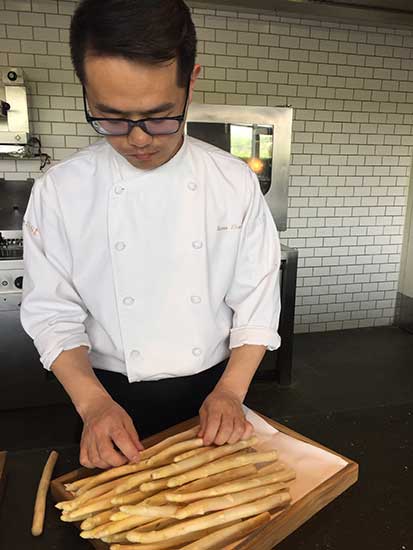
While plenty of white asparagus is canned in 10 dedicated factories in Shandong, much Chinese-grown asparagus leaves the country for two reasons. First, it's fairly new to Chinese, so the domestic market is small. Abroad, it commands a premium price-especially in Japan, where appreciation for the vegetable developed much earlier. Novelty and price are magnified for asparagus when it's white-it's much more labor-intensive to grow, but more farmers every year produce it because high-end restaurants will pay top dollar to get it each spring.
While many Chinese see white asparagus as a curiosity best appreciated by foreigners, the Chinese version was recently celebrated by the European Union. A project aimed at ensuring protection of 10 famous EU food names in China was a reciprocal campaign titled "10 plus 10", granting the same protection in Europe to 10 famous Chinese foods with specific geographic origins.
The European list includes Prosciutto di Parma (Parma ham) and Blue Stilton cheese. The Chinese list includes Longjing Tea (dragon-well tea) and Dongshan Bailusun-which now means "white asparagus" on both sides of the world.
For the next few weeks, look for white asparagus on seasonal menus at top hotels and restaurants, particularly Western outlets, in China's biggest cities.




















































